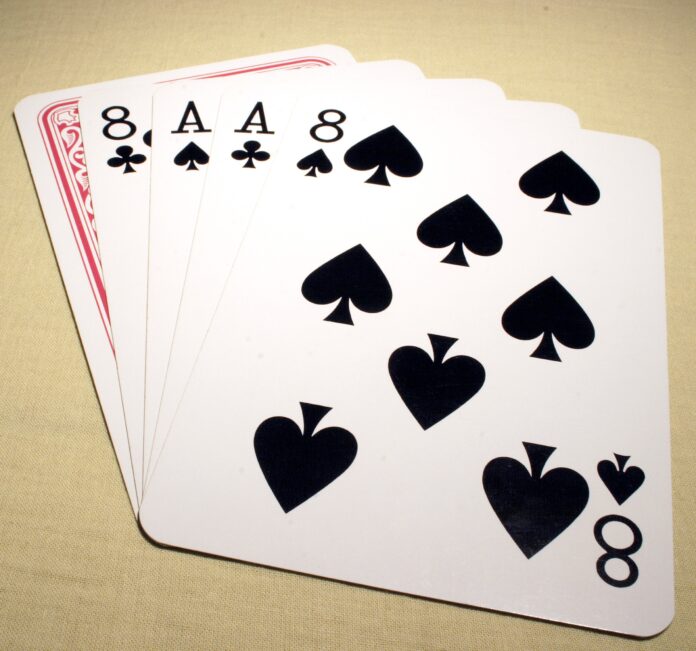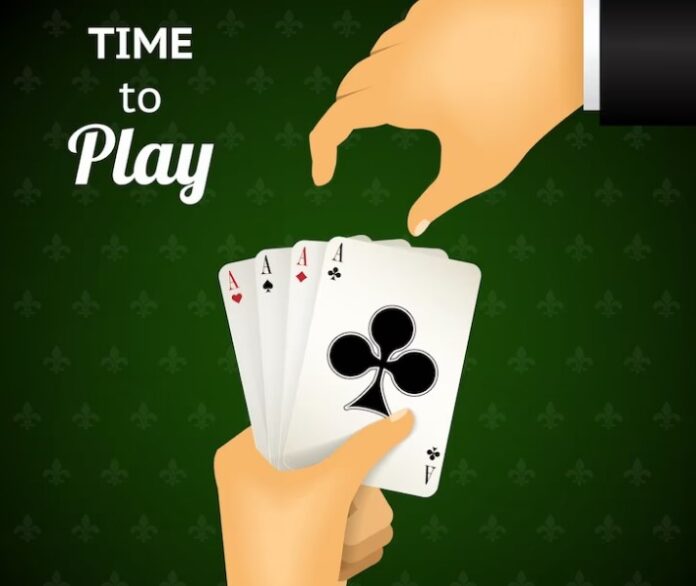Poker is a beloved game for many throughout the world. It offers players an abundance of diverse aspects and elements, requiring them to craft strategies and guess whether their adversary is fibbing or if they can cleverly disguise their own actions.
The extensive history and intriguing poker hands of this card game have undoubtedly contributed to its relentless success over the years. With so many diverse types of hands, it’s no surprise that millions worldwide are still drawn in by the timeless allure of poker. Its vast array of rules is an emblematic reminder of why this classic game has been enthralling players for centuries!
Poker has been around for generations, and there are countless moments that have become timelessly iconic. From hands of striking beauty to those where a fortune was won or lost – these are the legendary stories of poker’s history we still talk about today and those that will still be spoken about in many more years to come.
The Dead Man’s Hand

Perhaps one of the most famous hands to have ever been played in poker, Wild Bill Hickok’s ill-fated hand is legendary, often referred to as “The Dead Man’s Hand.” This symbolic poker combination – two black eights and two black aces – was supposedly his last set of cards before he met his tragic demise in an 1876 saloon shootout in South Dakota. Ironically, this treasured composition has since become associated with luck and success; it serves as a timeless tribute to the beloved game today.
The Doyle Brunson Hand
The “Doyle Brunson Hand” is a renowned poker hand, named after the legendary player Doyle Brunson who twice won World Series of Poker Main Events with this starting 10-2 offsuit hand in 1976 and 1977. This combination has since achieved such prestige that it was given its own moniker—the “Doyle Brunson.” In fact, to this day when players are dealt this particular set of cards they still refer to it as “the Doyle Brunson”; an unmistakable sign of table strength.
The Big Slick

The renowned poker hand of “Big Slick” is composed of Ace/King offsuit (often denoted as “Ace King Offsuit”). This term was derived from combining the ace, which looks like an A, and king resembling a K. When combined they form an A-K or ace-king combination that can be referred to as “big slick.” For experienced players, this starting hand holds great value because it has the potential for large rewards when played strategically.
Moneymaker’s KO
In 2003, Chris Moneymaker became the catalyst for a modern poker boom when he won the World Series of Poker Main Event after defeating Phil Ivey at the final table. His winning hand was an Ace-King combo, which has since become famously known as “Moneymaker’s KO”, and while the strength of this hand is not considered to be among the strongest of poker hands available, it has been credited as being the “hand that changed poker history.” This particular hand is now associated with the luck and success that Moneymaker achieved, and is a symbolic reminder of the potential that poker has to offer players.
Pocket Nines
Phil Hellmuth won the 1989 WSOP Main Event with a seemingly unremarkable hand of pocket nines, proving that even the most unexciting of starting hands can be extremely profitable. This particular set of cards is often referred to as ‘the Phil Hellmuth hand’ and has since gained an almost mythical status in poker circles. It serves as a reminder to all players that they should not be afraid to take risks when playing poker, even with seemingly inferior hands.
The Johnny Chan Trap
Perhaps one of the most famous hands in poker was played by Johnny Chan at the 1988 World Series of Poker final table. He laid a trap on his opponent with a seemingly weak Ace-Nine offsuit and then made a huge river bet that forced his opponent to fold. This move solidified Johnny’s reputation as one of the best players of his generation and helped him win the WSOP Main Event that year. The hand has since become known as “The Johnny Chan Trap”, a reminder to all poker players that with the right strategy and timing, even weak hands can be used to great effect.
Pocket Aces
Pocket Aces is the strongest possible starting hand in a game of poker and has become synonymous with success. This combination of two aces gives players the best chance to win big, making it particularly intimidating to their opponents at the table. Many experienced players will quickly fold pocket aces if they feel that they are up against stronger hands, but if they are confident in their ability to outplay their opponents, it can be an extremely profitable play. In the 2014 WSOP Big One for One Drop, Cary Katz and Connor Drinan both had pocket aces, however Katz managed to overcome his opponent with an Ace-high flush.
What Is The Significance Of These Poker Hands?
Poker hands are not only embedded into the poker world’s history but also serve as a reminder for players that even when dealt what seem like harsh cards, success is achievable with smart strategies. Through iconic matchups of famous players in the past and ongoing techniques, these timeless lessons will continue to remain valuable through future games.
Not only do these renowned poker hands teach us about the magnitude of focus, risk-taking and tactical thinking; but they also stand as reminders for players concerning the cruciality of strategic planning and making informed decisions. When to call or when to raise is a skill that distinguishes between an amateur and professional player – which makes it all the more important that we look back on these famous poker hands with reverence.
Verdict
These poker hands are a testament to the history of the game and represent a kind of legacy that will live on for years to come. They remind us all of the importance of proper strategy, risk-taking, and focus in poker, and serve as valuable lessons for new players learning the art of this timeless game.











